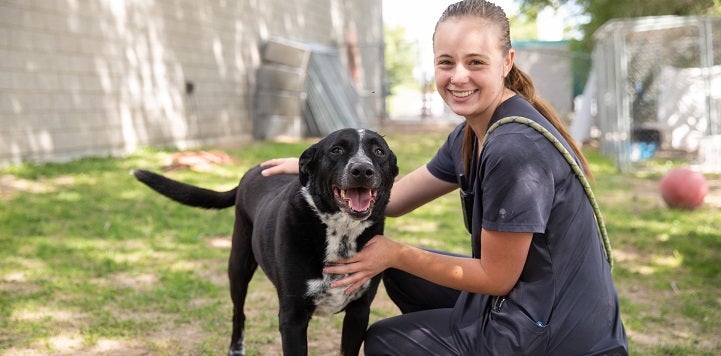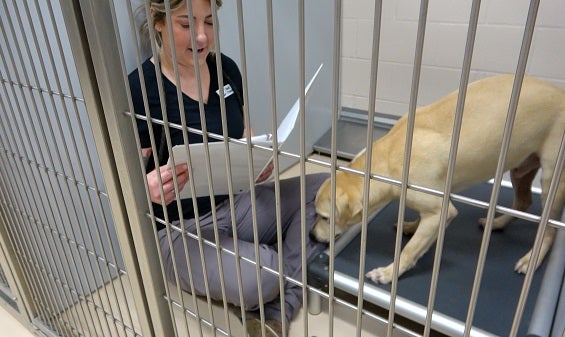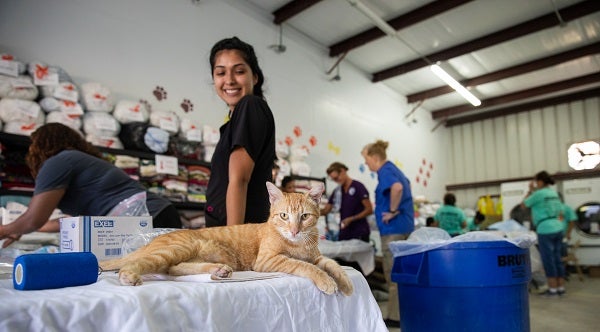
Expand your organizational reach through the power of volunteers
August 2, 2023
Volunteers can be the lifeblood of an organization, as long as you know how to plug them into your work. That doesn’t just mean creating the right tasks to fit their skills and the organization’s needs; it also means helping staff accept and work with a variety of people in ways that benefit everyone. The network website has a range of content available around this topic; here are some highlights to keep in mind when building, evaluating, and/or improving your organization’s volunteer program:
- Recognize the reasons why people volunteer.
- Sometimes people are driven by your lifesaving mission. Other times they want to get some exercise, be social, or (let’s be honest) squeeze some puppies and kittens. Use those motivations to craft volunteer roles.
- Sometimes people are driven by your lifesaving mission. Other times they want to get some exercise, be social, or (let’s be honest) squeeze some puppies and kittens. Use those motivations to craft volunteer roles.
- Build a menu of opportunities – and be open to new ideas.
- There are some fundamental volunteer roles that nearly every shelter or rescue should have (e.g., foster parent) and some that can save you money (e.g., by redesigning your website instead of hiring a company to do so).
Consider unorthodox roles as well, like allowing individuals to help in the clinic by sterilizing equipment or asking them to be an “Officer Uber.” Driving officers to their calls gives those staff time to input notes and prepare for upcoming calls on the ride from location to location.

- Create job descriptions.
- Written job descriptions are important because they clearly communicate roles, expectations, and boundaries. They also provide context so people can see how what they are doing is part of the organizational big picture.
- Written job descriptions are important because they clearly communicate roles, expectations, and boundaries. They also provide context so people can see how what they are doing is part of the organizational big picture.
- Formalize training.

- Volunteers need to be onboarded, so they are aware of all the rules governing what happens in your facility – and why.
- Use checklists, handbooks, and incorporate the training materials you use for staff about crucial policies and procedures.
- Put a reporting structure in place and consider using long-time volunteers to fill the role of trainer/mentor.
- Give volunteers an appropriate communication channel to ask questions or provide feedback.
- Don’t forget risk management components.
- Many municipal shelters have concerns about risk, especially if volunteers are assigned tasks where they can access sensitive info. Consider doing background checks just as you would for employees. Also have volunteers sign liability waivers and put contracts in place for projects that require your organization to share proprietary information or passwords (e.g., website redesign, database clean-up).
- Many municipal shelters have concerns about risk, especially if volunteers are assigned tasks where they can access sensitive info. Consider doing background checks just as you would for employees. Also have volunteers sign liability waivers and put contracts in place for projects that require your organization to share proprietary information or passwords (e.g., website redesign, database clean-up).
- Foster a team mindset.
- Volunteers and staff are most likely to build strong working relationships if they are accountable to the same systems, trained similarly, and fit workplace culture.
- Break down silos by inviting volunteers to participate in team meetings whenever appropriate – even those held weekly to discuss euthanasia decisions. You never know when they have vital information to share.
By the same token, volunteers need to treat staff with respect and abide by boundaries. No bash, no trash.

- Recognition is a big part of retention.
- Throw volunteer parties, give out “Pawfect Volunteer” awards, and express kudos on social media. Say “thank you” just because. Invite them to take part in special training activities (like learning how to run playgroups).
- Fosters are volunteers, too, so include them in your appreciation efforts.
- Set up a well-run program from the beginning. The time your organization puts into the volunteer program sends a message, too.
- Finally, heed the words of Pat Guerrero, director of national volunteer engagement at Best Friends: “There is never enough time, money, or hands to get everything done in a shelter that needs to be done. Only by engaging the community effectively and asking them to volunteer in support of the work will we ever get to no-kill by 2025. That’s the only way it’s going to happen.”

Liz Finch
Senior Writer
Best Friends Network
If you enjoyed this program spotlight, you can find our complete catalog of spotlights here.